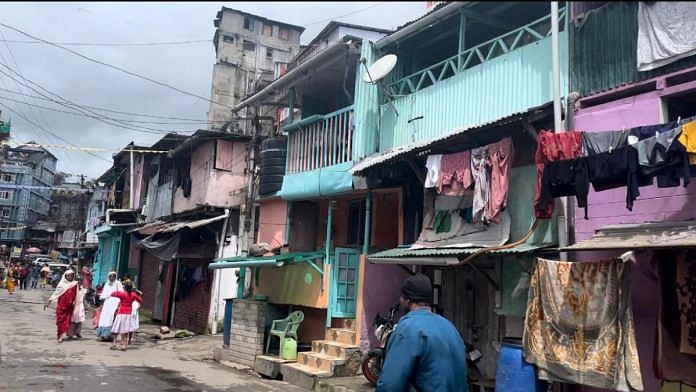Shillong: In the bustling heart of Shillong’s commercial hub Bara Bazaar, a shiny new white-and-gold gurdwara stands as an enduring symbol of unity and faith. But the road leading to it has been closed off to vehicles for over five years. The barricade is a painful reminder of the simmering dispute that has engulfed a tiny stretch of land since the Sikh-Khasi clashes erupted in 2018.
There is no traditional caste system in Shillong society, but the struggles of over 300 Dalit Sikh families tell a story of class and ethnic divide—riots, the long red tape of land relocation paperwork, and the debate over the beautification of the Bara Bazaar. At the heart of it is an increasing discomfort among the Khasi residents of the city over the impoverished neighbourhood in central Shillong. It is coming in the way of the city’s urban renewal dream.
“When there was a need for the services of the Dalit Sikhs, they were given the land to construct houses. Now, after putting a stay for more than 160 years on the given land, they are being deemed as outsiders,” said Ronki Ram, professor of political science at Panjab University.
The agony of these so-called outsiders ( Dalit Sikhs) is compounded as they are officially recognised as a Scheduled Caste community, Ronki Ram
The residents of Punjabi Lane cannot be pushed to the side, neglecting their basic human rights, just to spruce up the market area, Ram added.
He said that “the agony of these so-called outsiders” is compounded as they are officially recognised as a Scheduled Caste community.
In Punjabi Lane, a clamped-up area of 3.5 acres, descendants of Dalit Sikhs find themselves locked in a bitter legal battle with the Meghalaya government over the socially sensitive issue of relocation. These Dalit Sikhs were brought to Shillong by the British in the 19th century.
The area, also known as Harijan Colony and colloquially called the Sweeper Colony, emerged over a century ago. Originally housing the Dalit Sikh or Mazhabi Sikh community, traditionally employed as sweepers in the Shillong municipality, it has now grown into a densely packed residential area with 342 Punjabi families residing in 220 houses.
The strip of contested land is a tale of poor administration that allowed small quarters to turn into an unplanned, hodgepodge of concrete and wooden duplex homes. The saga unveils the complex dynamics of gentrification where a marginalised community came to occupy a prime commercial real estate due to a twist of historical fate.
“After I come home from work, this is what we talk about with the neighbours. We are always anxious about the next court hearing. Where will we go with our families if we don’t have a house to live?” asked Asha Kaur, who works as a cleaner at the Meghalaya secretariat.
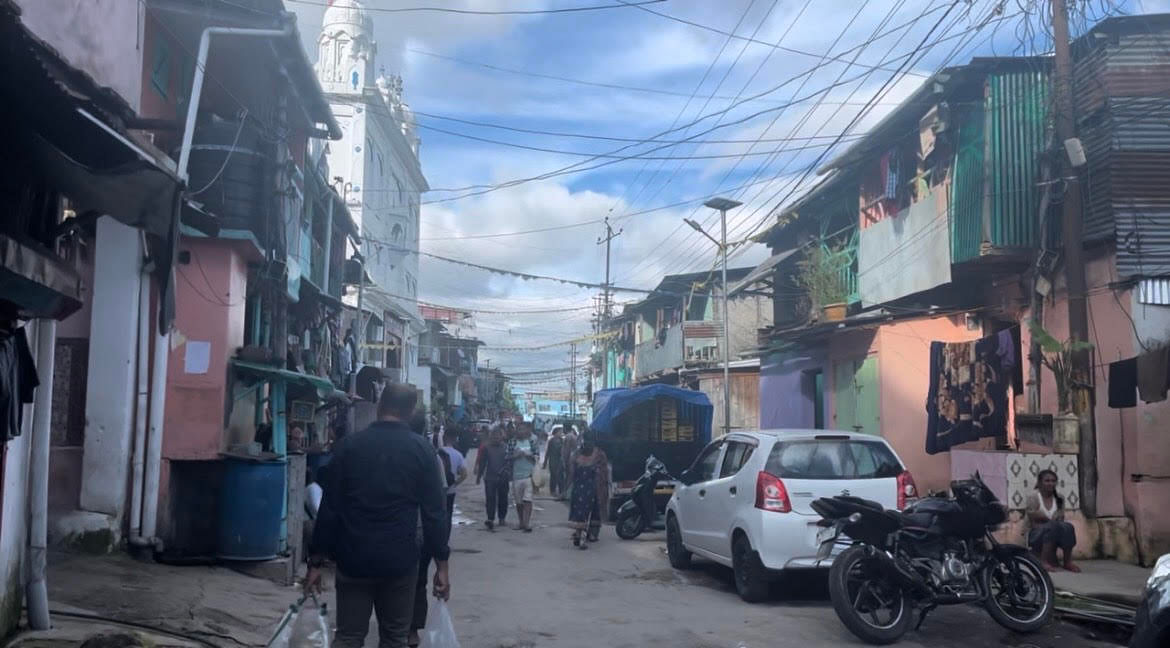
Also read: 21 dead in Sikkim floods, 1 soldier rescued. Search operations now focussed downstream of Teesta
A deep-seated dispute
The impending relocation of the Dalit Sikh community paints a vivid picture of the ongoing friction between Shillong’s tribal Khasis and non-tribal residents.
The sealed road to the gurudwara, now manned by Central Reserve Police Force (CRPF) personnel, serves as a reminder of the violence that erupted following a petty dispute over a bus parking space in the Sikh neighbourhood, which escalated into a full-blown conflict with the Khasis.
On the last day of May 2018, a quarrel broke out between a Sikh woman from the colony and a Khasi driver of a Meghalaya State Transport Corporation bus over the parking spot. Contrasting narratives emerged from then on. The Mazhabi Sikh community claimed that after a Sikh woman was harassed by Khasi men, she and four other women from the colony beat them up. The Khasi community has accused men from the Punjabi Lane of beating them up after an argument about parking.
But this quarrel has a deeper history.
Dalit Sikhs were deliberately made to settle there because it was closer to their place of work, Himadri Banerjee
Advocate Ritesh Khatri, representing the Dalit Sikhs in the Meghalaya High Court, said the community settled in the area, also known as Them Lew Mawlong, before 1863.
“The primary reason the community was made to settle in the Bara Bazaar area by the British was its proximity to the Shillong Municipal Board,” said Himadri Banerjee, a retired professor and author of the book ‘Beyond Punjab: Sikhs in East and Northeast India’.
He added that other Sikh groups – Ramgarhias and Sonars – also arrived in Shillong after 1947 and dealt in other occupations.
“Bara Bazaar is now a prime location. But we have to also see that they (Dalit Sikhs) were deliberately made to settle there because it was closer to their place of work,” he said.
These were no migrant shanties. Over time, the government gave it the status of a permanent home.
On 4 January 1954, an agreement was forged between the Syiem (Khasi customary head) of Hima Mylliem and the Shillong Municipal Board. Accordingly, the land parcel of the Sweeper Colony at Bara Bazaar was formally handed over to the Mazhabi Sikhs.
Since then, the land had remained under the possession and control of the members of the Harijan Panchayat Committee. In 1964, the Guru Nanak Upper Primary School was established on this same land, further cementing the community’s presence.
For years, there were no disputes. Khatri said tensions escalated in 1992 when attacks on the Punjabi Lane in Bara Bazaar began.
“In the year 1994, suddenly Shillong Municipal Board issued eviction orders to some of the residents,” Khatri said.
This prompted legal action. The Gauhati High Court’s Shillong Bench intervened to issue directions against authorities, including the Shillong Municipal Board, to restrain them from demolitions and evictions.
Khatri said the Punjabi Lane was set ablaze by Khasi miscreants, leading to the promulgation of Section 144 in 1996. Since then, the homes and shops in the area have been rebuilt.
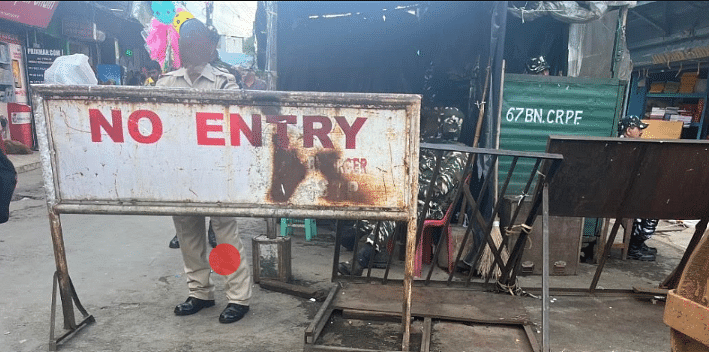
Turning point
Meghalaya witnessed a change in its political landscape in 2018. Chief Minister Conrad Sangma’s government came to power three months before the ethnic conflict broke out.
Shillong stayed under night curfew for weeks. In the meantime, the Meghalaya government constituted a high-level committee with the primary objective of examining all relevant records and documents relating to the relocation of people in the colony.
The issue of relocation started in 2018. Prior to that, discussions would be around resettling, Harijan Panchayat Committee president
“I recall that since the early 1990s, the government would call us once in a while to talk to us about relocation. The previous governments would do it on and off but the current government is continuously doing it,” Harijan Panchayat Committee president Gurjit Singh said.
He said that talks with earlier governments would be centered on resettling the community in the same area.
“The issue of relocation started in 2018. Prior to that, discussions would be around resettling. There were talks of constructing new buildings in the same area,” Singh said.
But things changed after Sangma’s government took over.
“The current government strictly wants the community to be shifted from here by any means,” he said.
The residents and the state government are currently in a negotiation process to decide where and how over 340 families will settle.
“Every area has a price and this area, which is in the centre of town, is absolutely priceless. So, the government wants to build shops here by moving us to another place, saying the area is currently a slum,” a resident of the colony said.
The residents said they would relocate once they have been allotted land and given the cost of building their homes themselves.
“The government isn’t agreeing to this. They are saying that they will provide us with small flats,” Singh said.
The Mazhabis are demanding 200 square meter plots for each family in Shillong’s European Ward, an exception to the state’s land-buying regulations. Singh said the government shared a blueprint last year that proposed a seven-story building to accommodate the community.
“But in Meghalaya, one cannot make a construction beyond 4-storey because it’s an earthquake-prone zone. No one in our community agreed to it,” the community leader said.
In the latest hearing of the case on 29 September, the state government submitted that it “has increased the extent of allocation and even the individual plot sizes”.
Khatri, however, denied getting any revised blueprint or any agreement, which he said: “has not even seen the light of the day”.
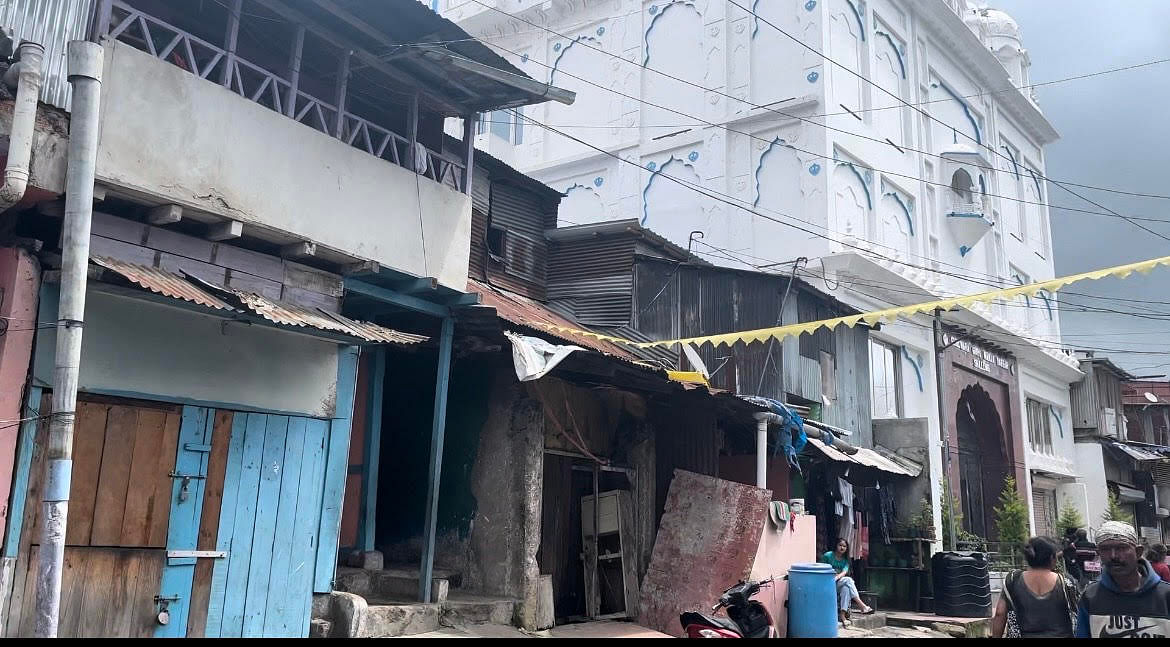
Also read: ‘Protect homes of displaced people for resettlement’ — Manipur human rights panel tells state govt
A persistent struggle
Away from litigation, the repercussions of the ongoing tussle have shaped the fate of the neighbourhood in recent years. The closed road, with its pedestrians and parked vehicles, might create an illusion of normalcy. However, the once-thriving shops in the area, including grocery stores, furniture shops, electrical outlets, and mobile repair stores have suffered. Nearly 40-50 of the stores have shut down.
Space is a luxury that few can afford in this congested locality.
Asha Kaur has turned the grocery store at the entrance of her house into a bedroom. The 57-year-old shares her creaky house with multiple family members, where a single room has been transformed into a duplex through ingenuity.
“My grandfather came here during the time of the British. My father first worked in the Shillong municipality and left that job to work as a driver,” Kaur said. She said they were six siblings, two of whom have died.
“I have a brother who has three kids. They live on the first floor. I live here with my mother, my son, daughter-in-law and grandkid. One of my sisters lives down the lane,” she said, sharing that except for a brother in Guwahati, the rest stay in the Harijan colony.
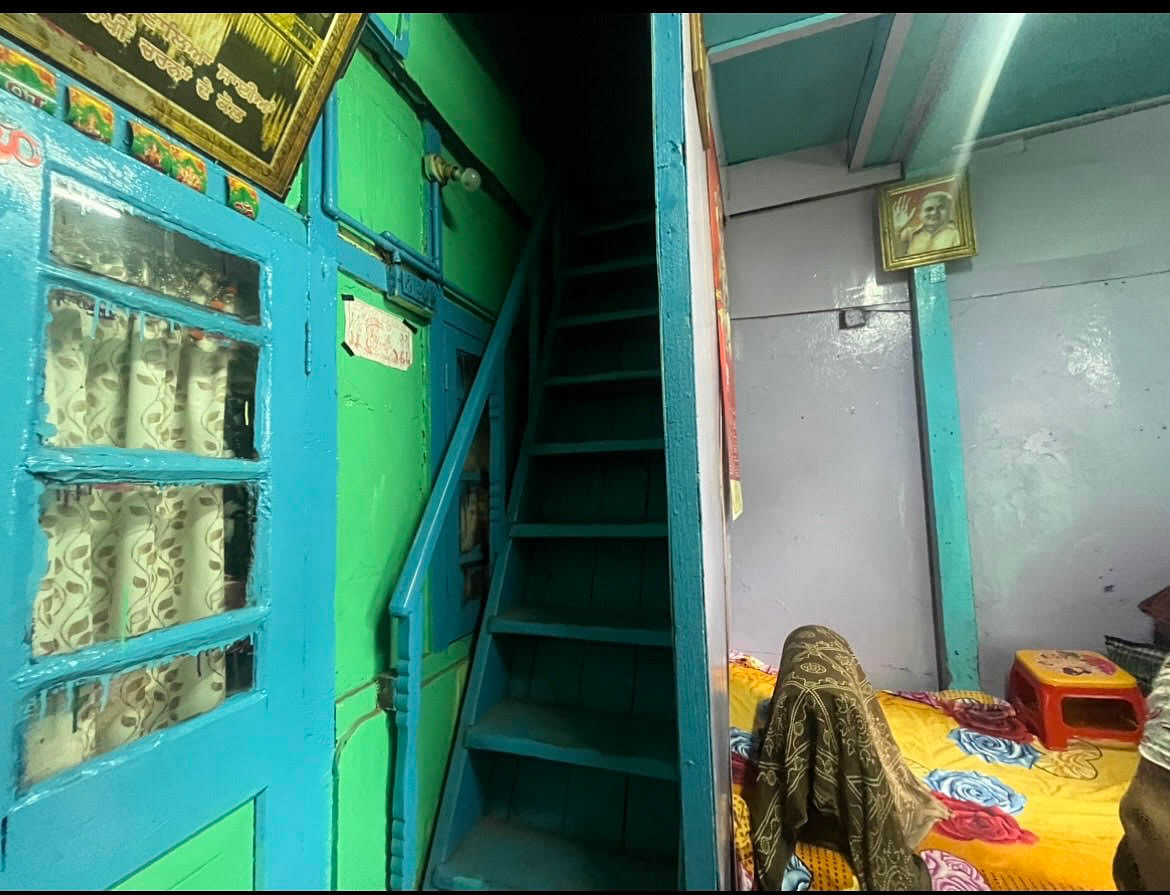
Relocating from homeland
Khasis in Shillong view the area as an eyesore and say that the Mazhabi Sikh community should shift elsewhere. A Khasi, who didn’t wish to be named, said the Sikhs should relocate for their own good. “Currently, they are living in such an overcrowded space, it’s better if they move to another place,” they said.
The Khasi Students Union (KSU) has also been pressing for the relocation of the Punjabi Lane residents.
Relocating them to another place is to “dislocate them from their living spaces and homeland”, Professor V Bijukumar
“It has been a long pending issue. We suggest and demand the government to shift the people to another location,” KSU president Lamok S Marngar reiterated.
He said that the student union would keep pressuring the government to speed up the process, highlighting that the state is “duty bound” to provide housing for the workers of the colony.
Jawaharlal Nehru University professor V. Bijukumar said the Dalit Sikhs have “an emotional attachment to their land and settlement”. And relocating them to another place is to “dislocate them from their living spaces and homeland”.
“The conflicting relations between these two communities often dilute the wider consciousness of social backwardness that might be capable of forging alliances between them for a common cause of ethnic survival,” said the professor, who is the chairperson of JNU’s Centre for Political Studies.
He added that the claims of indigeneity should be balanced with the settlers’ rights for peaceful coexistence and livelihood.
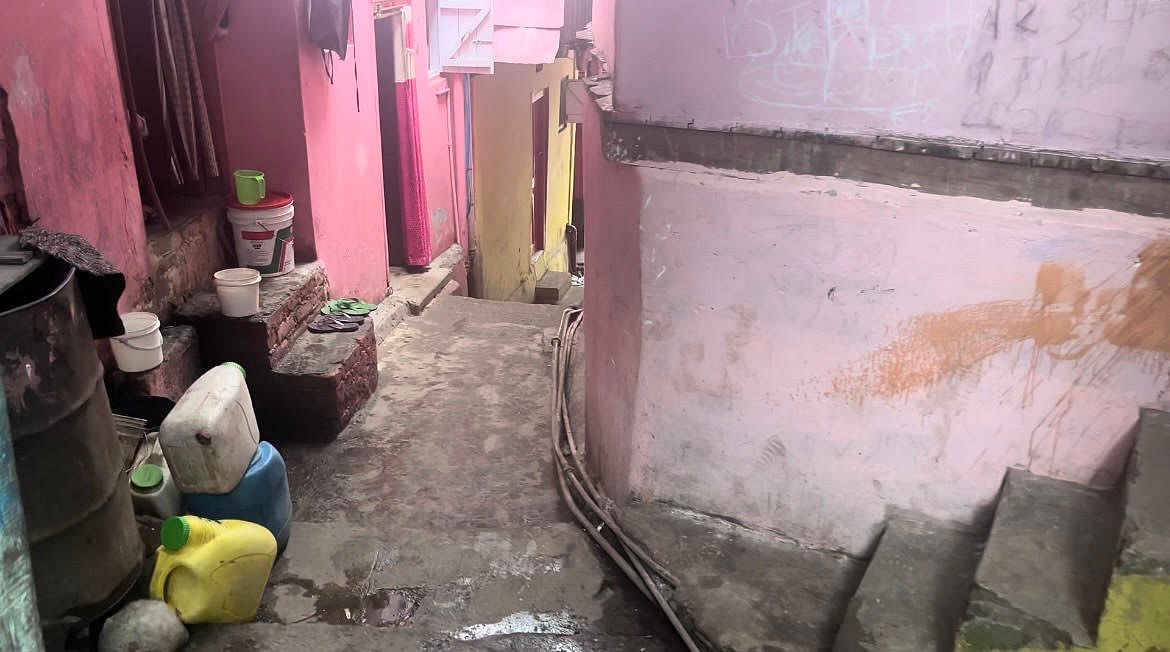
Also read: ‘Gunfights, extortion’— Manipur’s ethnic conflict revives insurgent groups, AFSPA debate heats up
Not a communal issue
It could have been any community residing in the area, human rights advocate
Giving a more holistic picture of the situation, a human rights advocate born and raised in Shillong said that the core issue was that government employees living in Sweeper Colony quarters needed to be shifted to a better location.
In the 1990s, nearly 800 members of the community were employed with the Shillong municipality, which has dwindled over the years. Gurjit Singh informed that less than 20 per cent of their community people today are employed with the municipality or other government departments.
“The real ground against displacement has taken a totally different colour, a totally different form,” said the advocate, who didn’t want to be named.
The 2018 incident took a “diabolic form” and got a “communal colour” because “the sentiments of the people were very raw”. The advocate also pointed out that the “ingrained battle of tribal and non-tribal was always there but it’s not specific to the Sikh community”.
Despite the strained ties, Khasis and Sikhs mingle in schools, offices, and a few even marry each other. “Mostly Sikh males have married Khasi women. It might not reflect so much because of the matrilineal nature of Khasi society where children inherit their mother’s surname,” the advocate said.
Providing better accommodation in a new area is a fundamental responsibility of the government. In the absence of these factors, the relocation exercise “will become a case of displacement and violation of human rights,” they said.
Professor Banerjee recalled that the restructuring plan of the Bara Bazaar area was part of a larger development program of the Shillong Municipality board — something he came across in 2007-2008 during his field trips.
The solidarity they showed after the (2018) incident was the radicalisation of the subaltern, it turned the table for them, Himadri Banerjee
Since the arrival of the first Dalit Sikhs in Shillong, over 150 years have passed. More than 5-6 generations have already lived on the land their forefathers first came to work on.
The community is determined to fight for their demands and get a better relocation deal. They show no sign of relenting and settling for less.
“They managed to mobilise the best of their voices. The solidarity they showed after the (2018) incident was the radicalisation of the subaltern, it turned the table for them,” Banerjee said.
The Dalit Sikh community finds itself caught in the middle of an urban beautification project but the human rights advocate stresses that the conflict is wrongly framed as a tribal versus non-tribal dispute. Approaching the issue of the relocation of Dalit Sikhs “pontifies them to a category of the caste-based religious community”. Rather, the situation should be seen as a challenge faced by the inhabitants of the Sweeper Colony.
“It has nothing to do particularly with the community but the location. It could have been any community residing in the area,” they said.
(Edited by Ratan Priya)


